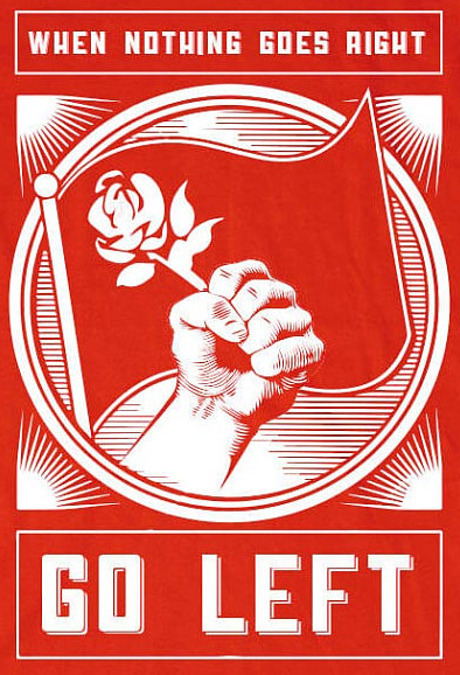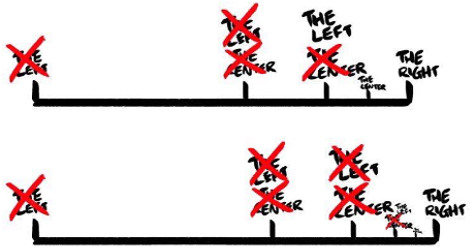The Crisis of Social Democracy: From Norway to Europe
The crisis of social democracy is being debated throughout Europe. Several of the historically strong labour parties have almost been wiped out in elections while others seem unable to recover from defeat. In the last few years, a number of social democratic parties have ended up with only one-digit election results (Greece, Ireland, Iceland, The Netherlands, France), while others have experienced major setbacks. The Norwegian Labour Party, for example, has experienced two of its worst elections – 2001 and 2017 – since the 1920s. Significant parts of the trade union movement believe that the party made serious blunders in what should have been an easy victory during last year’s parliamentary elections.

There is no doubt that social democracy is in a deep international crisis, although conditions vary widely between different countries. In Norway, this is neither about the deputy leader Trond Giske’s sexual abuse case, nor about the party leader Jonas Gahr Støre’s class background, nor about the army of party bureaucrats that has increasingly taken on roles as political actors in the party. These cases may be understood as symptoms of the crisis facing the party, but nothing more. If we really want to understand the crisis of the Labour Party, or more generally, of social democracy, we will have to go a little deeper into the current historical juncture.
Class Compromise at the Root of the Crisis
The dominant role of social democracy in much of 20th century Europe can hardly be understood without an analysis of how the economy and class relations developed during this period. Most important in this connection is the shift from confrontation to compromise in the relationship between the trade union and labour movement on one side and the employers/right-wing forces on the other. This historic compromise between labour and capital was the result of comprehensive class struggles that shifted the balance of power in favour of labour. [Ed.: see “The Rise and Fall of the Welfare State.”] Employers viewed such a compromise as a tactical step in order to dampen and counteract the radicalism of a strong and growing trade union movement. The compromise developed over time, but in Norway it was formalized through the first Collective Basic Agreement between the Norwegian Confederation of Trade Unions (LO in Norwegian) and the Norwegian Employers’ Association in 1935. That same year the Labour Party, with support from the Peasants’ Party, was able to win government power for the first time. Those were decisive events for the political development in Norway.
With this compromise – as well as the depression of the 1930s, the defeat of fascism through World War II and the existence of another economic system in the East – the foundation was laid for the golden age of social democracy. It was a real compromise, which changed the balance of power and forced employers eventually to grant a number of concessions to the trade union and labour movement – including the acceptance of major political interventions in the market. Thus, the basis was laid for great social progress for workers. The welfare state developed. The Norwegian, or Nordic, model came into existence.
From its foundation in 1887 to the class compromise of 1935, the Labour Party had emerged as a party of social justice – with socialism as the long-term goal. The fact that there has always been disagreement on the left about social democracy’s strategy and tactics is not the main point here. The important thing in this context is that the party emerged as a real mass organization for workers. The class compromise, however, did not only contribute to social progress; it also proved to have unforeseen effects. The compromise itself, and the Labour Party’s central role in implementing it through policy, had a strong transformative effect on the party’s organization as well as its politics. This development constituted the material basis for a political-ideological transformation and a deradicalization of the party – among other things through the development of a social partnership ideology. In short, the party changed from being a mass organization for working people into an administrator of the class compromise. It is here we find the seeds of today’s crisis of social democracy.
The Norwegian Model and Transformation of the Labour Party
The so-called Norwegian model is the trueborn child of social partnership ideology. There is little disagreement that such a social model developed based on the compromise. How this model should be understood, is a completely different matter. While it came about as a result of a very specific historical development in the struggle between labour and capital, in the Labour Party’s understanding it was gradually delinked from this fundamental conflict of interest. For the employers, the class compromise was a tactical move to undermine a strong and socialist orientation in the labour movement. For social democracy, however, it appeared as a higher form of reason – a collective sense based on the fact that employers also understood that cooperation, rather than struggle, was in their interest,as Norwegian social democrats reiterate.
Based on this social partnership ideology, social democracy then developed a comprehensive understanding of society where the economy (capitalism) could be governed by political regulation and market interventions (Keynesianism). In this way, a regulated, crisis-free capitalism could be created, while mass unemployment, poverty and misery, as in the 1930s, were relegated to history. The class struggle itself was tamed, and in many ways reduced to an institutionalized, collegial rivalry such as the biannual collective agreement negotiations.
This entire understanding was put to the test when capitalism again went into a crisis in the 1970s. Oil crisis, currency crisis, commodity crisis – and finally a full-scale economic crisis – displaced the post-war period of economic growth and stability. The social democratic policy of intervention in and regulation of the markets (Keynesianism) no longer worked. Stagnation and inflation arose in parallel (stagflation) and unemployment increased. Such a crisis was in many ways contrary to the prevailing social theory and ideology of the Labour Party. So were also the reactions of the employers and the political right, as “collective reason” gave way to an ever-increasing offensive against trade unions and the welfare state. Neoliberalism became the answer to the crisis from the employers and the right wing – not class compromise and joint solutions. In other words, the consensus-oriented labour movement was taken by surprise by this offensive.
The transformation of social democracy – from being a mass organization for workers, to becoming an administrator of the class compromise – made them unable to meet the attacks. Compliance towards the neoliberal offensive became the answer. Gradually, social democratic parties adopted more and more of the neoliberal agenda themselves – with privatization, deregulation and restructuring of the public sector to market-oriented New Public Management-inspired organizational and management models. This contributed further to strengthening neoliberalism within the Labour Party, as a large part of the state bureaucratic layer, which carried out this transformation, and where many ended up as well-paid directors, with strong self-interests, belonged to it. Thus, the party’s social basis was changed, something which makes it very difficult to turn or change its direction.
In fact, it is not a simple task to change a political organization. There are strong social, economic and political interests involved – as well as careerism, of course.
However, it is not just social democracy that struggles today. Both of the two main forces in the European post-war political landscape are experiencing formidable problems and major political turbulence. In a number of western European countries, the struggle between social democrats and so-called socially responsible conservative parties was dominant, and they often swapped positions. Both were linked to class compromises in different forms, and these characterized their policies. Now, however, the economic and political power relations have changed. The historical compromise between labour and capital has largely broken down, although the process is slower in the Nordic countries than in the rest of Europe.
The Resolution to the Crisis Lies in Building a Real Left Alternative
It is therefore not only the crisis of social democracy we are experiencing; it is the post-war political model in Europe, based on the historical class compromise, which is breaking down. In the first phase of this political crisis, new far-right parties emerged – viz Front National in France, the so-called freedom parties in Austria and the Netherlands, and the Progress Party in Norway. The lack of any alternative from social democratic and left-wing parties means they must take their share of responsibility for this development. They had no policy to take on the neoliberalist attacks on the social gains that had been won through the welfare state. In recent years, however, we have seen that new political alternatives have started to grow also on the left (Syriza in Greece, Podemos in Spain, Momentum in the UK, and the newly established Power to the People in Italy). These are young and incomplete initiatives, which can fail (like Syriza) or succeed, but in any case will further develop through struggles and experiences, victories and defeats.
There is little evidence that the Labour Party will be able to transform itself into what we need as a liberating force in the current situation. The social basis for radical renewal is too weak and organizational barriers too strong. It is also a question what it means to rebuild social democracy. The thesis of a late Norwegian party ideologist, that “socialism is the policy that the Labour Party is pursuing at any time” is hardly enough. As social problems are increasing and ever more people are feeling insecure and unsafe, any party of the left will need to have more radical alternatives, visions and solutions – very different from the political centre or the right.
In the absence of real alternatives, parties of the existing social democratic order will probably still be able to win elections without any deeper transformation – when frustrated voters move from one political option to another as they realize that election promises are broken. This should hardly lead to any relief among leaders of contemporary, crisis-ridden social democratic parties. A growing number of workers, and young people in particular, have started to demand more radical solutions.
Or, as Antonio Gramsci famously said: “The crisis consists precisely in the fact that the old is dying and the new cannot be born; in this interregnum a great variety of morbid symptoms appear.” •





